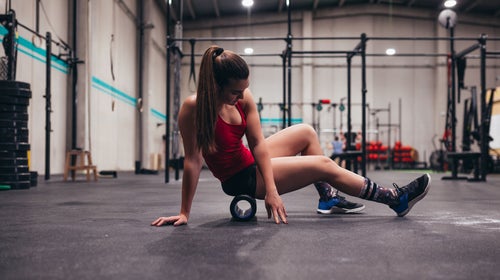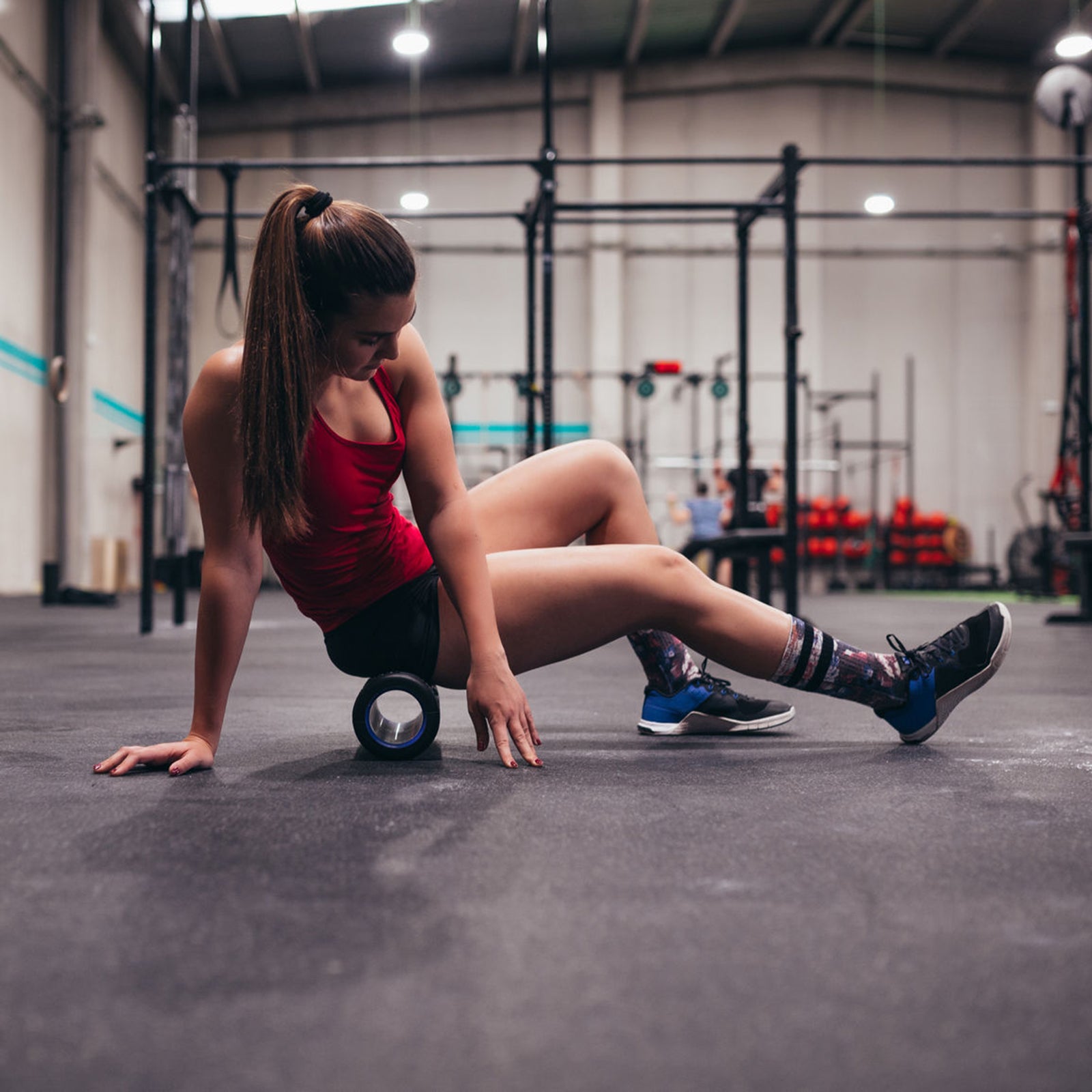The short answer: Definitely foam roll before your workout, and after if you want to.
The expert answer: We posed your question to Dr. Mike Clark, former CEO of the National Academy of Sports Medicine. His advice on foam rolling, if taken as the final word on self-myofascial relesase, led us to a surprising revelation: almost everyone is doing it wrong. But, according to Clark, if you do it correctly before exercising, rolling should help prevent injuries.
What to Do
“If you want to get your body ready for a workout session, foam roll your calves, the outside of your IT band, your piriformis, you adductors, and your mid and upper back,” Clark says. But instead of rolling back and forth constantly, as many athletes do, he says to roll until you find the most tender point in each area, then keep the roller on that spot for 60 seconds. Concentrating on sensitive spots will help relax your muscles, which Clark says is the first step in a proper warm up, followed by stretching any tight muscles, and then performing dynamic exercises like prisoner squats and lunges.
Why Roll First
You have two major receptors in your muscles, Clark says. One is your muscle spindle, which makes the muscle contract. The other is called the Golgi tendon organ, which makes the muscle relax. “They both should be in balance with one another, which allows the tissue to work without getting injured,” Clark says.
If you have any muscular imbalances, and all you do to warm up is dynamic or static movements, your body will be continuously compensating for your problem spots, Clark cautions. “Stretching stimulates the muscle spindle and makes it more overactive. Deep pressure stimulates the Golgi tendon organ, which then overrides the muscle spindle, which allows the tissue to relax, which prepares it for stretching,” Clark says. Foam rolling before stretching and exercising is like taking the parking brake off before you start driving your car, he says.
Clark says 900 soccer players at the University of North Carolina practiced his recommended warm up program under his supervision—foam roll, static stretching, dynamic stretching. “They had a significant reduction in injuries by following that exact system,” he says.
As for more scientific evidence to back a brand new trigger-point-releasing warm-up regimen, there’s not a lot. But studies like touting the foam roller’s ability to increase range of motion without interfering with muscle force are beginning to emerge.


